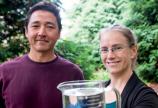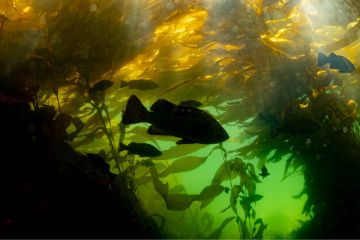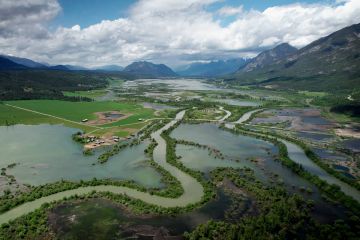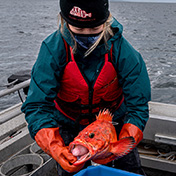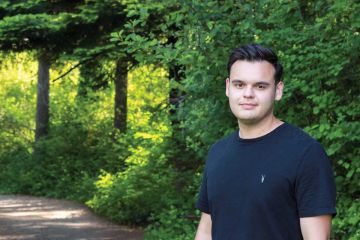Safer water
- Jody Paterson
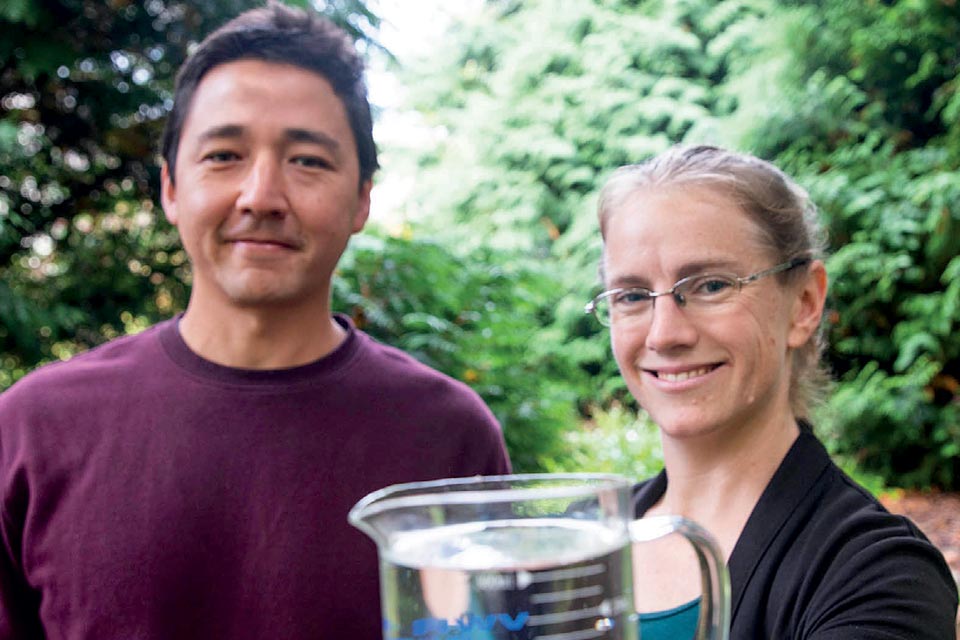
Clean water, essential to global health, is the focus of two civil engineering research groups.
No resource is more important to the future of global health than water. Life can’t exist without it, yet it can carry death, disease and toxins, killing millions every year.
In UVic’s Department of Civil Engineering, two research groups are working to identify new ways of increasing access to safe water, which more than two billion people around the globe still lack. The researchers are bringing new understanding to old problems, developing tools and technologies for a world that needs more and more water.
Caetano Dorea describes himself as working “at the cross.roads of environmental and public-health engineering.” His multi-disciplinary lab, Public Health and Environmental Engineering (PH2E), conducts research on both water and sanitation. The PH2E lab specializes in measuring problems; developing analytical techniques for understanding those problems; and finding solutions that work in real life—equipment that can withstand extreme weather; processes that can be maintained by local people after the engineers go home; and “the human factor” considered at every stage.
“If we treat water and people then collect it in a dirty bucket, that’s not going to work,” explains Dorea.
Heather Buckley is guided by the principles of green chemistry. Her team is developing cheap, accessible sensors for testing drinking water and researching how to produce environmentally harmful goods like anti-foulants in ways that cause no harm at any stage in the life cycle of the product. “Green chemistry is as much a design principle as it is chemistry,” says Buckley.
Dorea is recently back from the Rohingya crisis at Cox’s Bazar, Bangladesh, where underperforming water systems are affecting hundreds of thousands of refugees settled in camps. It’s an extreme situation that began almost three decades ago but intensified dramatically in 2017, when more than 700,000 Rohingya people fleeing Myanmar flooded into Cox’s Bazar.
“Sometimes when you’re designing things, you seek the best that can be achieved, and come up with something that goes beyond regulations. In other contexts, like humanitarian response, we tackle things differently,” explains Dorea. “We know the constraints, so we ask, ‘What’s the worst we can tolerate?’”
A typical humanitarian response focuses on the quality of water, says Dorea. But quantity counts for a lot. He seeks solutions that walk a careful line between giving up a little on the quality side in order to increase the overall supply. Cholera can kill a person in five days, he notes, but other contaminants might take five decades to have an effect on health. His research looks to find an acceptable midpoint that maintains basic safety but allows for greater quantity.
“The vast amount of disease transmitted in a refugee camp is from poor hygiene, and you need a quantity of water to address that,” he says. “If I give you two litres a day to drink and nothing to wash your hands, addressing the spread of disease can’t be accomplished.”
Buckley’s multi-faceted research includes the development of a simple, affordable sensor for testing water for life-threatening contaminants. Her research team is working to develop sensors that will ultimately cost just a few dollars per use and are sufficiently easy to understand that anyone will be able to test their community drinking water and immediately determine if it’s contaminated.
In some cases, the tests exist already, but what’s lacking is the technology that puts the power of testing the drinking supply into the hands of the community. Water testing, as typically con.ducted anywhere in the world right now, is expensive and slow, says Buckley, leaving the people most impacted by potential contamination in a state of uncertainty for months as to whether their water supply is harmful.
In other cases, certain contaminants are known to be harmful to human health and the environment, but no tests exist for them. Buckley believes that her sensor, similar in size to a diabetes test strip, will one day be helping communities on both fronts. Her research group has developed a prototype sensor for testing water for fluoride—a natural element that builds strong teeth at one part per million, but even as little as two parts per million can be dangerous to bone health.
Now, the team’s working on a sensor for perfluorinated compounds—PFCs. These manufactured chemicals are useful in putting out fires (they stabilize firefighting foam) and creating no-stick cookware, but are a persistent health risk in the environment. “They don’t exist in nature, so they don’t break down,” says Buckley.
She and Dorea share an interest in extracting resources from water. Dorea is exploring how to extract phosphorous from waste water, which would both get rid of an environmental contami.nant and recycle a non-renewable resource. Buckley is exploring ways to extract valuable metals from mining effluent, which she hopes could lead to a reduction in mining activities.
“My favourite green-chemistry examples are the ones that don’t use chemicals,” says Buckley. “How can we achieve a function in a better way? That’s when I’ll know I’ve succeeded—when I’ve designed the chemistry out of the system.”
—
More stories from the Torch special section: Future Health
- Health through a legal lens
An interview with Dr. Irehobhude (Ireh) Iyioha of UVic Law - Art for everyone
Dance training for mixed-ability artists - Direct messaging
Warning labels best at showing alcohol's health risks - Double jeopardy
Cannabis, alcohol and the developing brain - Better medicine
Nanoparticle research to create safer, more effective drugs - State of mindfulness
Exploring the origins and continuing interest in mindfulness in health
Photos
In this story
Keywords: water, health, international, pollution
People: Caetano Dorea, Heather Buckley
Publication: The Torch

